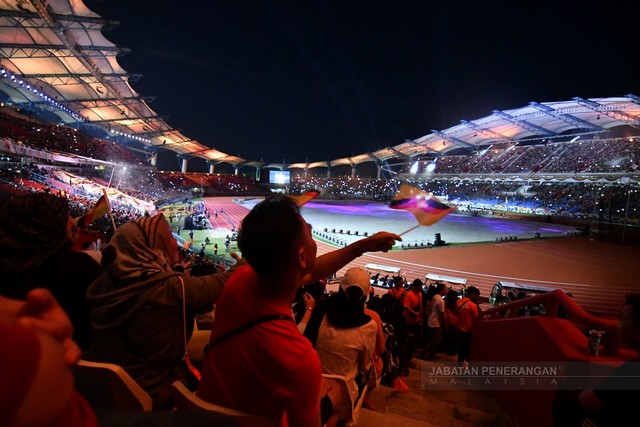2024 has been a very exciting year for sports. The quadrennial UEFA Euro 2024 in Germany saw Spain winning the tournament for a record fourth time. Paris hosted the 2024 Summer Olympics, marking the centenary of its last Games and becoming the second city to host it three times.
Also playing host to a multi-sports event for the third time is Sarawak with the 2024 SUKMA Games. The recently concluded national-level competition saw the State topping the medal table with 76 golds, ending a 30-year wait to be crowned overall champion.
These events have attracted visitors for all over globe to be part of the celebration, demonstrating the increasing importance of sports tourism in terms of development.
UN Tourism describes one of the fastest-growing sectors in tourism as “…the travel experience of the tourist who either observes as a spectator or actively participates in a sporting event generally involving commercial and non-commercial activities of a competitive nature.”
The United Nations agency adds that the sector accounts for 10 per cent of the global tourism spending, and is projected to grow at a rate of 17.5 per cent between 2023 and 2030 as it draws attention from both domestic and international tourists.
“Mega sport events such as the Olympics and World Cups can be a catalyst for tourism development if successfully leveraged in terms of destination branding, infrastructure development and other economic and social benefits,” it says. These benefits can include employment opportunities, income generation and growth of local businesses.
This is because visitors spend on accommodation, food and beverages, shopping and visits to other tourist destinations, among a myriad of other activities, that can boost local economies of countries hosting the sports events.
In general, there are three types of sports tourism:
Passive Sports Tourism
The passive form of sports tourism is perhaps what many would associate the sector itself: visitors heading to a destination to watch a sports event. These events come in various forms – they can be multi-sport events such as the Olympics and SUKMA Games, or individual sports like FIFA World Cup and BWF World Tour.

They are also not limited to the professional level. There are family members or friends who would attend amateur sports tournaments to watch people they know competing at their level best in the games that they love.
Active Sports Tourism
Unlike those who attend a sports event to observe, active sports tourists participate in their chosen competitive activities. Professionals, amateurs and running enthusiasts, for example, tend to seize the chance to race in marathons through popular events including the Boston Marathon, Tokyo Marathon and London Marathon.

Some might also travel for other purposes, but still incorporate sports into their trips. This especially applies to extreme sports, and Malaysians can visit various parts of the country instead of going overseas to have a go at them, such as paragliding, rock climbing, white water rafting, zip-lining and caving.
Nostalgia Sports Tourism
Visits to sports facilities, museums and exhibitions are examples of nostalgia sports tourism. These tourists are not necessarily spectators or active participants in sports; rather, their goal is usually to discover or reminisce their favourite sporting moments through these attractions.
Among famous ones are are the Olympic Museum in Lausanne, Switzerland; La Vila Olímpica del Poblenou in Barcelona, Spain; the Maracanã Stadium in Rio de Janeiro, Brazil; the Naismith Memorial Basketball Hall of Fame in Springfield, Massachusetts, the United States; and the Wimbledon Lawn Tennis Museum in London, England.

Reference:
Mulyanto, R. (2023, November 27). Pack your jerseys. The era of “sports tourism” is here. CNBC. https://www.cnbc.com/2023/11/27/pack-your-jerseys-the-era-of-sports-tourism-is-here.html
Nobles, C. (2023, March 13). Sports Tourism: What Does It Mean For You and Your Community? National Recreation and Park Association. https://www.nrpa.org/blog/sports-tourism-what-does-it-mean-for-you-and-your-community/
UN Tourism. (n.d.). Sports Tourism. https://www.unwto.org/sport-tourism
Universidad Europea. (2024, March 22). Sports tourism – what is it? https://universidadeuropea.com/en/blog/sports-tourism/





